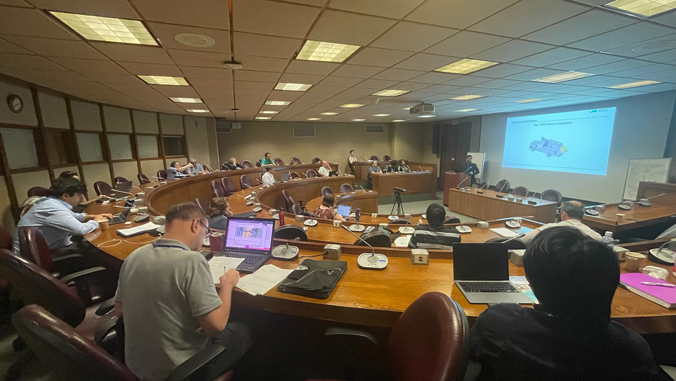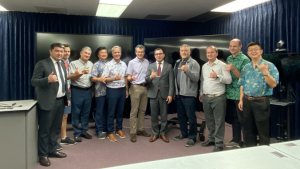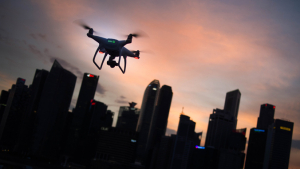
The future is now! Unmanned, cutting-edge autonomous systems used in space, aviation, underwater and more were the focus of an international science conference hosted by the University of Hawaiʻi at Mānoa, March 15–17.
Organized and managed by UH Mānoa College of Engineering Professor Dilmurat Azimov, the International Union of Theoretical and Applied Mechanics (IUTAM) Symposium on Optimal Guidance and Control for Autonomous Systems brought together dozens of the leading innovators from around the world, including experts from UH Mānoa.
Azimov, who was the symposium chair, presented two talks. The first was on guidance, navigation, control and robotic technologies with NASA computer/GNC engineer Evan Kawamura, a UH Mānoa mechanical engineering alumnus (BS, 2016 and PhD, 2020). The second was on motion stability and robotic technologies.

Assistant Dean Song K. Choi said, “The IUTAM Symposium on Optimal Guidance and Control was a high level gathering of international scientists, engineers and experts engaged in novel concepts, theories, methods and implementation of these optimal guidance and control, nonlinear dynamic systems and motion stability, sensor fusion and AI/machine learning to further the performance of autonomous systems. It also gave us the opportunity to engage with a delegation from Uzbekistan, a first for UH Mānoa, for greater collaboration in research and academics.”
The conference kicked off with an introduction by Azimov and opening remarks by UH Vice President for Research and Innovation Vassilis L. Syrmos. Kumu Brad Lum delivered a Hawaiian cultural presentation to the attendees. Lum and the organization Nā Mea ʻIke ʻIa shared a sense of understanding and responsibility through the concepts provided from the kānaka (Native Hawaiian) world view of aloha, kuleana (responsibility) and mālama (to care for and protect), with the connection of ancient wisdom applied to engineering and technology.
“One of the main aspects of the symposium is to understand and recognize the origins of today’s guidance and navigation solutions for autonomous systems in association with the Hawaiian cultural heritage of voyages in the seas, such as the story of Hōkūleʻa,” Azimov said. “This event promotes an understanding of this heritage especially among the students and younger generation in exploring new frontiers of science and engineering.”
Targeting malicious drones

Several UH researchers were among the presenters of the three-day conference, including David Liang, an electrical engineering master’s student, and Yingfei Dong, electrical and computer engineering professor, who both presented on drones. The researchers proposed a unique method to identify drones based on the encrypted traffic between a drone and its controller. This method would target consumer drones that have become a low-cost and effective tool for malicious activity, such as intruding on restricted airspaces, conducting illegal surveillance and dispatching explosives. The talk titled “Identifying Consumer Drones via Encrypted Traffic,” was Liang’s thesis topic in fall 2022.
“Presenting at this conference was a new and rewarding opportunity for me,” Liang said. “I received valuable feedback from many experts in their fields, which was extremely helpful and motivational for my future research. I also had the opportunity to learn from many of the other presentations and to discuss details with the speakers. Overall, it was a very educationally-rewarding challenge.”
First established in 1922, IUTAM today has more than 500 active scientists who represent about 50 countries and 20 affiliated international organizations.
—By Marc Arakaki

